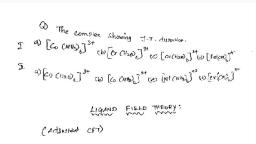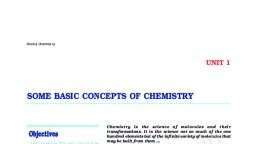Question 4 :
The fibre obtained by the condensation of hexamethylene diamine and adipic acid is:
Question 6 :
Vulcanization of rubber helps to make rubber hard and resistant to hot and cold conditions.
Question 8 :
A high molecular weight molecule, made up of a large number of smaller units, is known as
Question 9 :
Which of the following is currently used as a tyre cord?
Question 17 :
With increase in which of the following factors, tensile strength of a polymer increases?
Question 19 :
The simple molecules from which a polymer is made, are called
Question 21 :
The catalyst used in the manufacture of polythene by Ziegler method is:
Question 22 :
When condensation product of hexamethylenediamine and adipic acid is heated to 353 K <img style='object-fit:contain' src="https://storage.googleapis.com/teachmint/question_assets/NEET/5ead67f1381c2135355c7cf9"> in an atmosphere of nitrogen for about 4-5h,the product obtained is
Question 24 :
The compound that inhibits the growth of polymer chain during vinyl polymerization, is
Question 30 :
Which of the following can be repeatedly soften on heating?<br>{tex} \begin{array} { l l } \text { (i) Polystyrene } & \text { (ii) Melamine } \\ \text { (iii) Polyesters } & \text { (iv) Polyethylene } \\ \text { (v) Neoprene } \end{array} {/tex}<br>
Question 31 :
Which of the following types of bonds are present in nylon-6, 6?
Question 37 :
Which of the following type of forces are present in nylon-6, 6?
Question 44 :
The monomers used for the preparation of nylon 2-nylon 6 is/are
Question 51 :
The number average molar mass and mass average molar mass of a polymer are respectively $30,000$ and $40,000$. The polydispersity index (PDI) of the polymer is:
Question 52 :
Assertion (A) : The plants yield a milky suspension of crude rubber called latex.<br/>Reason (R) : The latex contains about $85\%$ rubber.<br/>
Question 58 :
The mass average molecular mass & number average molecular mass of a polymer are respectively 40,000 and 30,000. The polydispersity index of polymer will be:
Question 59 :
Which one of the following polymers is not properly matched to its monomer?
Question 61 :
The s-block element used as a catalyst in the manufacture of Buna-S rubber is :
Question 70 :
Find out the approximate amount of polythene formed from $20$kg of calcium carbide from the following reactions. <div><br/>$CaC_2+2H_2O\rightarrow Ca(OH)_2+C_2H_2$</div><div><br/>$HC\equiv CH+H_2\xrightarrow{Pd\cdot BaSO_4}CH_2 =CH_2$</div><div><br/>$nCH_2=CH_2\rightarrow \underset{Polythene}{(-CH_2-CH_2-)_n}$</div>
Question 71 :
Formation of polyethylene from calcium carbide takes place as given below:<br/>$CaC_{2}+2H_{2}O\rightarrow Ca\left ( OH \right )_{2}+C_{2}H_{2}$<br/>$C_{2}H_{2}+H_{2}\rightarrow C_{2}H_{4}$<br/>$nC_{2}H_{4}\rightarrow \left ( -CH_{2}-CH_{2}- \right )_n$<br/>The amount (in kg) of polyethylene obtained from $64.1$ kg of $CaC_{2}$ is<br/>
Question 75 :
Which of the following alkenes is least reactive towards anionic polymerization?
Question 76 :
Hair sprays generally contain resins in a volatile solvent. Upon drying, they leave a thin film that holds the hair in place. Which of the following is a resin used in hair spray?
Question 79 :
Which of the following type of forces are present in vulcanized rubber?
Question 81 :
Assertion: Nylon fibres are stronger than terylene fibres.
Reason: Intermolecular forces of attraction in terylene are H-bonding.
Question 86 :
Synthetic human hair wigs are made from a copolymer of vinyl chloride and acrylonitrile and is called:
Question 88 :
A synthetic rubber which is resistant to the action of oils, gasoline and other solvents is:
Question 89 :
Assertion: Neoprene can be further hardened by heating with the sulphur.
Reason: It contains allylic double bond which help in introducing sulphur bridges between different polymer chains
Question 95 :
Vinylite resins are copolymers of vinyl acetate and vinyl chloride. They are resistant to wear and tear to chemicals. One of their well-known uses is in:
Question 97 :
<div>Assertion:</div>$\bar{M_{n}}$ value is always greater than $\bar{M_{w}}$ value for synthetic polymers.<br/><br/><div>Reason:</div><div>The mass average molecular weight of the polymer is equal to $\bar{M_{w}}$.<br/></div>































